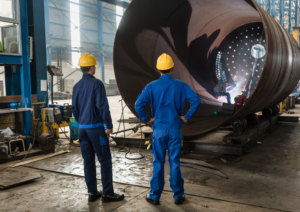What Is Net Zero?
In 2015, the United Nations Climate Change Conference (COP21) met in Paris and brokered a historic accord, The Paris Agreement. Chief among the long-term goals set out by the coalition was a commitment towards a net-zero future. Defined as a state of equilibrium in which the amount of greenhouse gases produced and released into the atmosphere are balanced out via carbon removal processes, net-zero emissions were outlined as a pivotal way to combat global warming.
While it would be ideal to cut greenhouse gas emissions down to zero entirely, the current framework of manufacturing, energy production, and agriculture makes that a nigh impossible task. Instead, net-zero focuses on a two-pronged approach geared to towards reducing emissions while scaling up carbon removal. For this to be effective, net-zero states must become permanent over a long term basis. Reduction in CO2 emissions must be consistent while the carbon sinks stay protected.
Key Climate Technologies
Achieving a net-zero agenda requires a gargantuan amount of effort on the part of all stakeholders. To circumvent this, the development and deployment of climate technologies plays a vital role in accelerating efforts towards our net-zero goals. Serving dual purposes in reducing carbon emissions while absorbing residual CO2 produced, climate technologies bring exponential value in hitting net-zero targets. Crucially, these bleeding edge climate technologies do not operate individually. Providing benefits larger than the sum of their individual parts, climate technologies implemented at facility, enterprise, or even regional levels appear to be most effective.
Some examples of these key climate change technologies are already being adopted on a mainstream scale. Through technology, we now have smart buildings that utilise the Internet of Things (IoT) and Artificial Intelligence (AI) to analyse energy use and develop independent systems for efficient operation. These same buildings also leverage solar panels while sporting next-generation batteries capable of storing reserves of renewable energy. Working hand in hand, smart buildings serve as a clear example of how climate technologies provide increased value when woven together.
Another example of key climate change technologies working hand in hand is exhibited in the attempted decarbonisation of transportation and pilot scheme for net-zero trucks. Responsible for 53% of CO2 emissions within global-trade related transport, road freight can be seen as heavy contributor to greenhouse gas emissions. Recognising this, an initiative by the World Economic Forum (WEF) in 2020 saw the adoption of battery-electric vehicles (BEV) and hydrogen-fuel-cell-eletric vehicles (FCEVs). Utilising infrastructure in renewable energies such as public charging points and hydrogen-fuelling stations, these advancements in climate technologies seek to reduce the net carbon emissions of medium and heavy duty trucks that the logistics industry crucially relies on.
How Can Corporates Play Their Part
Though emerging climate technologies are poised to shoulder majority of the burden moving forward in the fight against climate change, corporations are not resting on their laurels just yet. Positive moves such as mainstream adoption of ESG goals, in conjunction with net-zero targets, are making far strides in their own regard. Massive financial institutions such as Great Eastern and JP Morgan Chase have set tangible milestones to work towards – the former clearly outlining its 2025 net zero operational carbon footprint ambition, while the latter announced massive plans to deepen its commitment towards sourcing renewable energies for 100% of their own global power and strengthening investments towards clean energy.
Elsewhere closer to South-East Asian shores, businesses such as Gunung Capital are doing their part in the fight against climate change. Taking part in Climate Impact X’s pilot auction of a portfolio of high-quality carbon credits, the private investment management company aims to better protect the environment by investing and supporting carbon markets. Understanding that game-changing transformation does not happen overnight, the company values daring projects that hold intrinsic long-term value, both fiscally and environmentally. Gunung Capital has plans to continue its partnership with Climate Impact X and hopes to support the transition towards low-carbon projects and achieve net-zero by providing companies with high quality carbon offsets.





